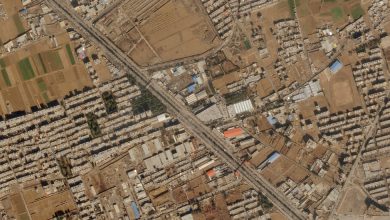W.H.O. Asks China for Details on Surge of Respiratory Illness in Children

The World Health Organization has formally requested that China share detailed information about a recent increase in respiratory illnesses, citing unconfirmed media reports of undiagnosed pneumonia in children.
China has been reporting a jump in respiratory illnesses for months. Chinese media reports have described long lines at pediatric hospitals, and doctors have said that this year’s wave appeared to be more severe than those of previous years.
Chinese officials have attributed the illnesses to known pathogens such as influenza, SARS-CoV-2 — the virus behind the coronavirus pandemic — and mycoplasma pneumoniae, a common bacterium that typically causes mild illness in children.
But some news and social media reports have described crowds of children at hospitals with pneumonia, without specifying the exact cause of illness. On Wednesday, the W.H.O. requested more information from China.
“It is unclear if these are associated with the overall increase in respiratory infections previously reported by Chinese authorities, or separate events,” the W.H.O., a United Nations agency, said in a statement Thursday.
During both the outbreak of SARS in 2003 and the coronavirus pandemic that began in 2020, China’s surveillance and reporting of infectious diseases drew global scrutiny and criticism. Both times, officials covered up early cases, and stonewalled requests from health officials overseas, including the W.H.O., for more information and access to patient data.
Several experts said in interviews that the current rise in cases might not be cause for concern, noting that further testing could illuminate the reasons for the apparently undiagnosed cases. But they acknowledged that many around the world were on higher alert toward reports from China.
“Definitely, there is concern about transparency from China,” said Raina MacIntyre, a professor of global biosecurity at the University of New South Wales in Australia. “Given the history of what happened with Covid, I think W.H.O. decided to get on the front foot, which is a good thing, and request information from China now.”
The W.H.O. said it had requested laboratory results from the reported clusters among children, as well as more details about the current burden on health care systems. It said it was also in touch with clinicians and scientists through its networks in China.
One of the news reports, by an outlet in Taiwan, was also shared on ProMED, a disease tracking site run by the International Society for Infectious Diseases, which highlighted some of the earliest reports of the 2003 SARS virus and SARS-CoV-2.
Chinese officials have not publicly acknowledged concerns aboutunknown pathogens this time, and have not publicly responded to the W.H.O. statement. In domestic media, they have urged calm about the surge in respiratory illnesses, saying the increase is due in part to the lifting of China’s three years of strict coronavirus restrictions.
Those restrictions had kept many other infectious diseases that normally circulate in the winter at bay, making the current surge feel more dramatic, when in fact it is normal, Tong Zhaohui, the director of Beijing’s Institute of Respiratory Disease, said at a news conference hosted by China’s National Health Commission on Nov. 13.

Children on intravenous drips on a staircase at a hospital in Beijing on Thursday. Concern appears to be high among many parents in China, who have crowded hospitals despite experts urging them to seek treatment at clinics.Credit…Jade Gao/Agence France-Presse — Getty Images
The National Health Commission has not released overall statistics about the surge in illness. But at one children’s hospital in Anhui Province, doctors performed 67 bronchoscopies in one day, compared with 10 on a normal day, according to a report by the local government. State-run media in the city of Hangzhou, in eastern China, reported that outpatient pediatric visits at one hospital had tripled from last year, when the Covid restrictions were still in place. About 30 to 40 percent of those children had been diagnosed with mycoplasma pneumoniae, the article said.
The appearance of undiagnosed pneumonia cases is not in and of itself a sign of a new pathogen, said Professor MacIntyre, at the University of New South Wales. Pneumonia-like symptoms are fairly common, and whether their causes are diagnosed often depends on the surveillance and testing systems in their home countries, she said.
In other countries, infectious diseases besides the coronavirus also spiked after the authorities lifted pandemic restrictions. It is possible that the same is happening in China, especially as there is evidence that prior infection with the coronavirus makes people more susceptible to other diseases. Chinese doctors have said patients in this round appear to have mixed infections, or drug-resistant ones, which may be making symptoms worse.
The key, Professor MacIntyre said, is testing the children who are sick in China, and either confirming or ruling out known causes.
“If diagnostic testing is repeatedly negative, that would point towards a novel pathogen,” she said.
Concern appears to be high among many parents in China, who have crowded hospitals despite experts urging them to seek treatment at smaller clinics or stay at home for milder cases. Photos shared with The New York Times from a hospital in Beijing showed a child lying with a woman on the floor, and long lines in a lobby.
Wu Si, the mother of a three-year-old boy, said she waited more than eight hours when she brought him to Beijing Children’s Hospital on Nov. 2 after he developed a low fever and a cough. He was later diagnosed with mycoplasma pneumonia.
“It was crazy,” Ms. Wu said of the wait. She said that she wanted to know whether the surge was because people’s immunity had been weakened during the coronavirus pandemic. “If this happens every year, parents won’t be able to take it.”
Jin Dongyan, a virologist at the University of Hong Kong, said the Chinese government should quickly share more data to back up its claim that the current wave was not more severe than in the years before the pandemic.
“By our professional judgment, it might not be a very big deal, everything is well-expected,” Professor Jin said of the surge in sickness, pointing to the similar phenomena elsewhere.
But “people are more sensitive, people are overreacting,” he said. “The only thing to do is tell people the truth.”
Joy Dong contributed reporting.




